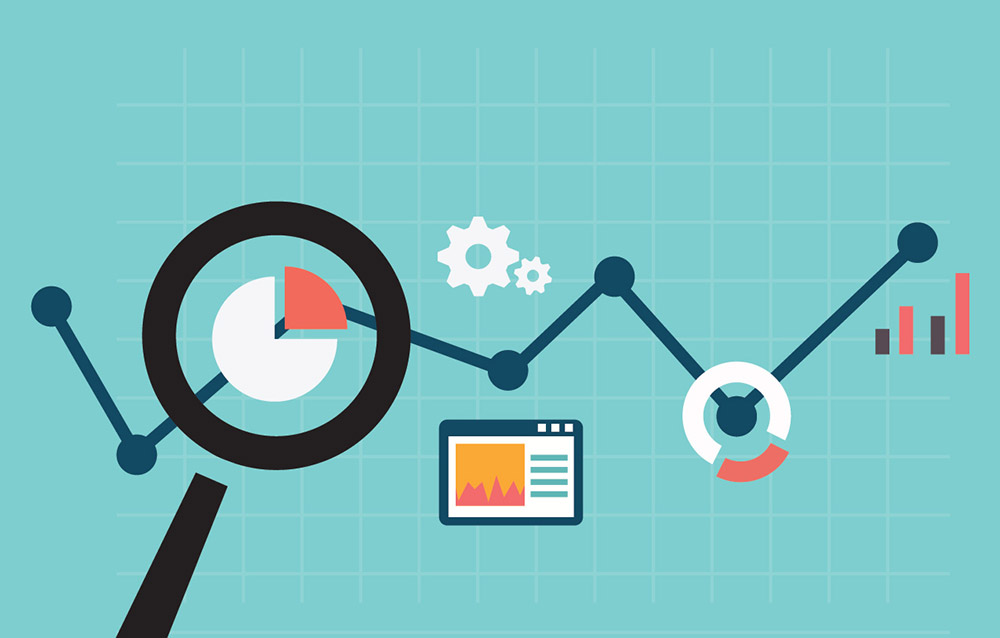Back to Basics: Planning Your Digital Marketing Campaign – Defining Goals and Identifying KPI

Back to Basics: Planning Your Digital Marketing Campaign – Identifying Website Objectives
November 13, 2015
Back to Basics: Planning Your Digital Marketing Campaign – Segmenting Data, Measuring Results, and Continuous Improvement
December 18, 2015In our most recent blog post, we described the process for laying down the foundations of an effective Digital Marketing & Measurement Plan.
Hopefully you’ve had a chance since our last post to take a look at your business, considered what your main business objectives are, and determined which type of website is most likely to help you deliver on your business objectives.
This post will walk you through the next stage of building your Digital Marketing & Measurement Plan by defining your website’s goals, and identifying your key performance indicators.

This is the second part of a three part blog post aimed at helping you identify where your website can bring your company value.
Want to skip the hard part? Contact ABORG and our staff can help your organization with your digital marketing needs from online marketing strategy, to search engine optimization (SEO services), and online pay-per-click marketing (AdWords & PPC management). Contact us now!
Defining Goals and Identifying Key Performance Indicators
Because different types of websites perform different duties, each will have different goals that they can accomplish. Using the website archetypes we described in our “Back to Basics: Planning Your Digital Marketing Campaign – Identifying Website Objectives” post, I’ll describe some common goals each may have, and help you visualize what that may mean for your organization. Following the step towards defining goals, we can move on to the next one to identify how we measure our progress towards these goals with something called key performance indicators.
Defining Your Website’s Goals
To recap the various types of websites, we have online information/support websites, branding websites, content publisher websites, ecommerce websites, and lead generation websites. Let’s identify some commons goals you might expect from each of these types of websites.
Online Information/Support Websites:
If the goal of an online information/support website is to educate customers and maintain customer satisfaction when they need help with an issue, our goals may be to decrease the time they spend on site, or at least shorten the length of time between when they land on the site to when they get in contact with a support associate to 30 seconds. This could be accomplished with an easy-to-navigate website, and calls to action directing the user to a contact page or in some cases a live-chat widget built-in directly to the site.
Branding Website
With a branding website, we want to build and promote our company presence. Some common goals for a branding website may include keeping the visitor on site longer — for 5 minutes, for example. Through engagement with the content on the website, the user learns more about the company, and builds interest in our offerings. Another goal could be to encourage users to share the content they find on site. To achieve this, engaging content is key, especially if it’s something that people would want to share with their friends. Some common trends include games, or quizzes that provide personalized results.
Content Publisher Website
Much like a branding website, content publisher websites want users to spend time on their sites. In addition to having visitors spend more time on the site, we might also have the goal of encouraging return visitors. If we want to encourage people to return to the website, we have to be sure to give them a reason to. In the case of blogs, fresh and interesting content is key, whether it be monthly, weekly, or daily, the more frequently and consistently you can deliver on new posts that your audience is interested in, the more likely you’ll have them coming back, for example two or more times in a week. As an added incentive, you may want to incorporate regular contests that encourage return visits.
Ecommerce Website
The goal of the ecommerce website is to make as much revenue as possible. An example of a goal we might set would be to have an average minimum purchase of $100. We can potentially influence this by encouraging the sales of higher ticket items through visible calls to action. We can also encourage up-sales through tactics like displaying recently viewed items, or items that sell well with whatever is currently in the user’s shopping cart.
To make the entire process easier, we definitely want to ensure we have an easy-to-use ecommerce platform that facilitates transactions. The more difficult the checkout process is, the harder it will be for you to get that sale. In the case of return buyers, you may want to have the option of saving a user’s information for future purchases as well, so they can zip through the process the next time around if you have a goal of having X percentage of repeat customers per month.
Lead Generation Website
Similar to the ecommerce website, the lead generation website aims at achieving leads in volume; for example, we may want 4 qualified leads per week. This means easy to use forms, and improving them as time goes on. For instance, if we identify certain information users aren’t willing to share, and we can get along by having the user only fill out their email, instead of email and phone number, we may decrease the number of people who drop off during the process… increasing our amount of completed lead forms, potentially.
Added incentives can be a valuable way to gather your leads’ information as well. For example, offering a whitepaper on how to improve business productivity may be what it takes to have someone give you their email, and stay in touch with you for any relevant updates in the future.
The above are just a handful of examples each type of website may have. Can you think of any you may have for your website?
Keep Your Website’s Goals Realistic
An important thing people of lose sight of when defining goals is making them realistic. If our goal is to retain visitors on a blog post for a certain length of time, we can’t expect them to spend more time on the page than it takes to read the post. The same goes for other goals – to have well-defined goals you need them to be specific and realistic. Having historical data for the interactions on your site can help a lot when defining your goals, but using industry standards can work well if you have no other data, or are starting from scratch.
Once the goals of the website are defined, the next stage is measuring the website’s progress to achieving these goals. By measuring progress we can see if we’re successful or not, and adjust our marketing plan to account for any deviations in achieving our business objectives.
Identifying Key Performance Indicators
Key Performance Indicators (KPI) are the measurements with which we can determine our website’s progress towards the goals we highlighted above.
Some of these measurements can be used to determine different trends or patterns and may have equal, yet unique importance for differing goals.
Some key performance indicators can include the length of time a user spends on the site, or how many pages they browse through after finding your site. Others can involve more tangible metrics, like the dollar value of a transaction they perform on your site, or how many requests for information you receive in a day.
The majority of these KPI can be measured on your website with the help of Google Analytics. By inserting a snippet of code into your website, usage information on your site is recorded and tracked in the Google Analytics platform. More sophisticated measurements require additional code, like events tracking (but that’s a topic for another blog post altogether).
Let’s quickly go over some KPI for the goals we defined above:
Online Information/Support Website:
• Session duration
• Number of pages visited per session
Branding Website
• Number of pages visited per session
• Clicks on share button (event tracking)
Content Publisher Website
• Clicks on share button
• Number of new visitors vs. number of return visitors
Ecommerce Website
• Number of new visitors vs. number of return visitors
• Dollar value of each transaction (ecommerce tracking)
Lead Generation Website
• Number of content downloads (event tracking)
• Number of forms submitted (goal tracking)
Having good key performance indicators means having a metric in mind, and having some way to measure them against your goals. Think of some KPI that go with your goals.
Measuring Your Website’s Results
Now that we’ve gone over defining goals for your websites, and some of the KPI we can use to measure their progress, the last part of the Digital Marketing & Measurement plan involves measuring your results. Stay tuned for our last blog post on the topic, where we’ll go over some more information on KPI and what to look for when sorting through your data.
Want expert advice and support from experienced professionals to help with your digital marketing strategy? At ABORG, we strive to understand our clients’ needs and transform them into marketing initiatives that deliver the results they deserve. Contact us and we’ll be more than happy to help!




